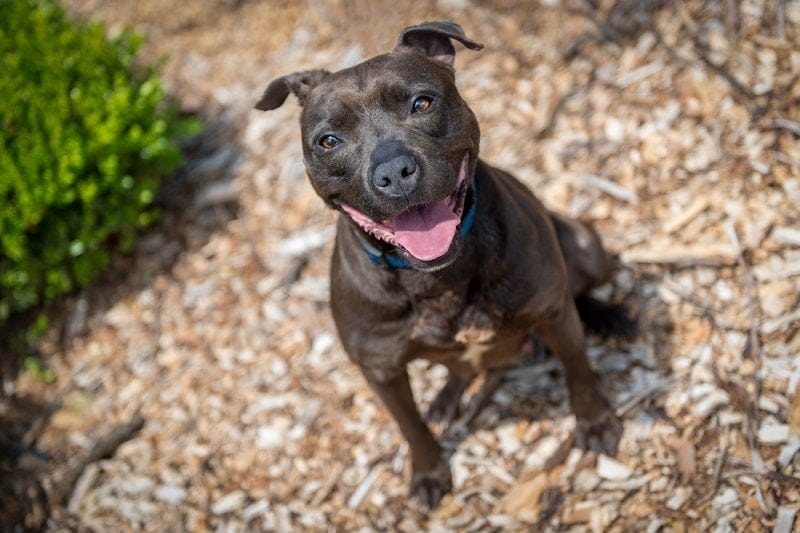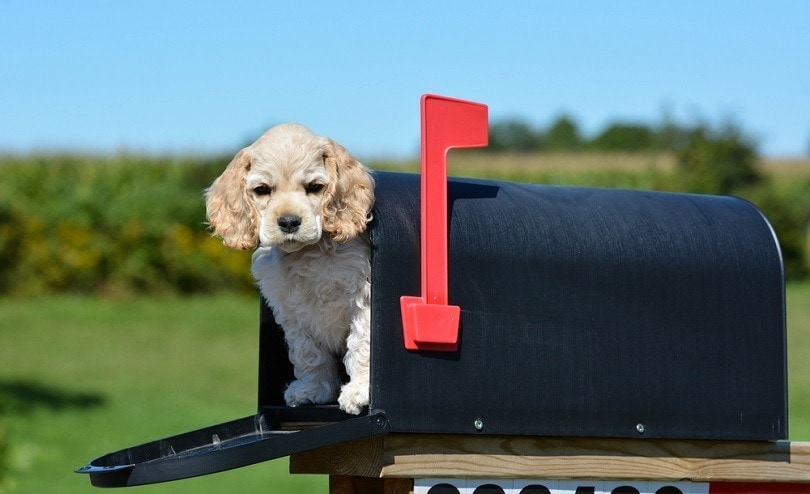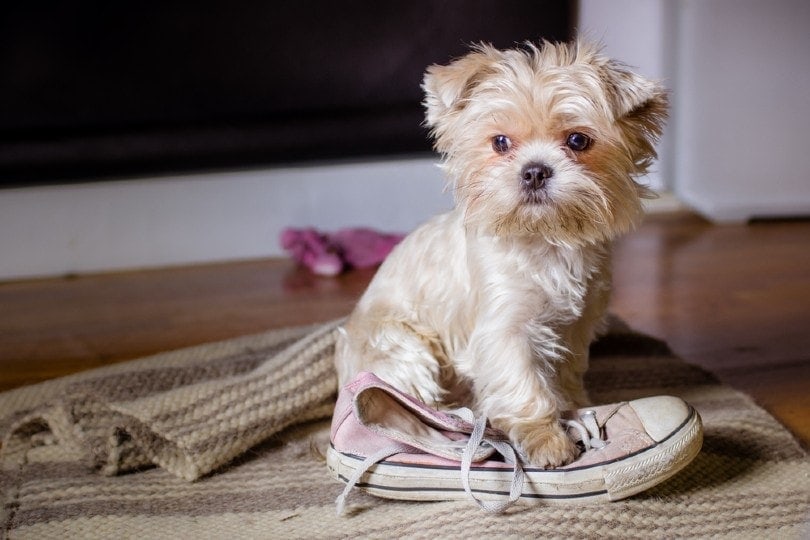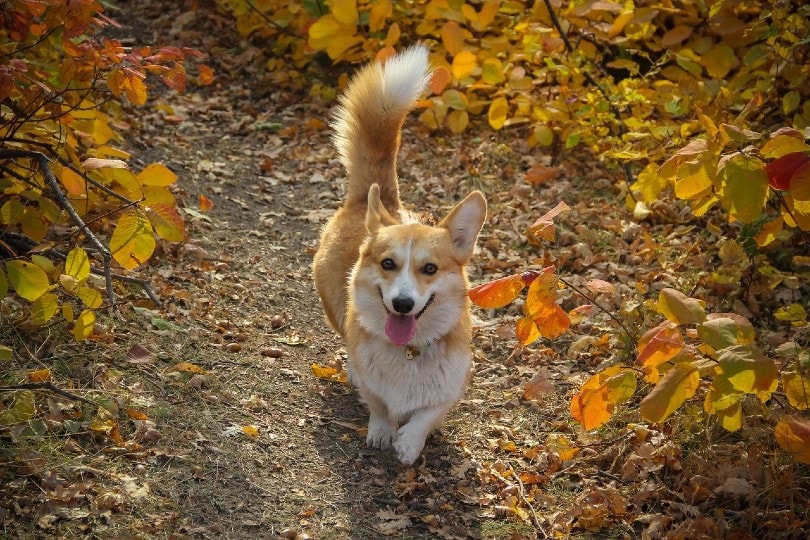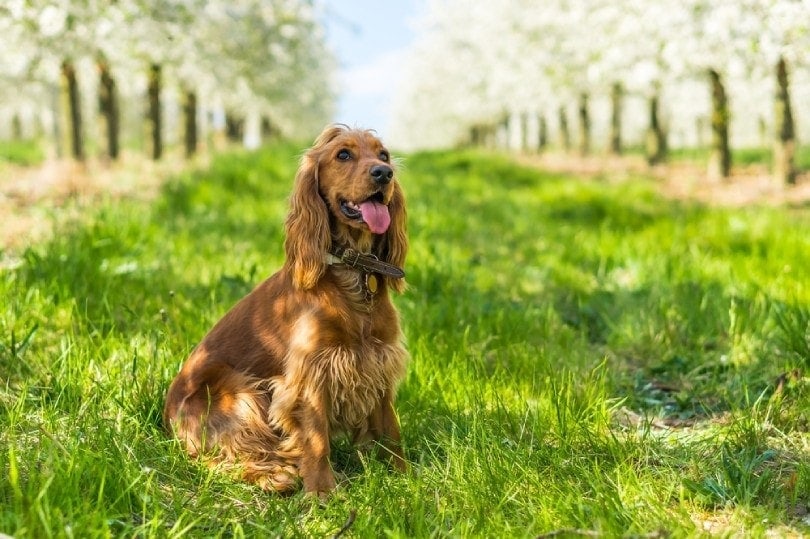Mulching can reduce weeds and the need to weed. It helps maintain soil moisture levels and allows the management of soil temperatures. It is generally considered an effective way of maintaining flower beds.
The mulch itself can take many forms, but it always seems popular with dogs, who like to walk across it, sit and lay in it, and even roll and dig in it. Unfortunately, the nature of mulch means that it sticks to your dog, and they will drag or track it into your home.
Fortunately, there are a few things you can do to prevent this mess, short of showering your pooch every time they come in from the garden. We have included nine steps to take that will help keep your dog out of the mulch in the first place.
What Is Mulch?
Mulch is a layer of material that is added to the top of soil flower beds and gardens. It is typically organic but may be inorganic and usually consists of a mixture of wood chips, leaves, or shredded bark. You can also use lawn cuttings, compost, or straw. Inorganic compounds include plastic and geotextiles.
You can make your own mulch. Many lawnmowers include a bagger that will collect grass mulch, ready for your use. Alternatively, it can be bought from garden centers and home supply stores.
Why Do Dogs Love It?
The main reason that dogs love mulch is the smell. If you make your own compost, there’s a good chance that it includes leftover food. Even if you use a commercial blend, its natural aroma will warrant investigation. Unfortunately, besides smelling, one of the ways that a dog investigates a new aroma is by rolling in it.
Even if you use an organic compound, like wood chips, the scent of pine might be enough to pique your pooch’s curiosity and engage their olfactory senses.
Dry mulch can be tracked into the house via your dog’s paws. It can be carried in on their coat if they roll in it. If the mulch is wet or damp, it can find its way into your home and onto your carpets in a variety of other ways.
Top 9 Ways How to Keep Your Dog Out of Mulch
To stop newly laid mulch from being picked up and carried into the house, there are a few steps that you can take. Start with the simplest step and progress if required, but remember that there may not always be a solution to your dog rolling in mulch.
1. Spray It With Citrus
Experts tell us that dogs dislike the smell of citrus. One of the easiest, least expensive, and most convenient methods of stopping your dog from digging in and rolling in mulch is to apply a citrus aroma. Take pure lemon juice or another citrus extract, dilute it with water, and spray it on top of and in the mulch.

2. Use Cayenne Pepper
Another dilution that will deter your dog from rolling in the flower beds is a cayenne pepper and water mix. Mix 1 part cayenne pepper to 10 parts water. The solution should be a deterrent and not potentially harmful, so be careful not to overdo the amount of cayenne. Create the mix and apply it in a fine spray around the area. If there is an especially troublesome spot, give this area an extra soaking.
3. Add Vinegar
Although cayenne has a strong taste, vinegar has a stronger odor. So, if the citrus and the cayenne both fail to deter your dog, mix one-part vinegar to five parts water to create a spray. The type of vinegar doesn’t matter, but you may want to avoid using anything too expensive. The spray will soak into the mulch, so ensure that you pay particular attention to problem areas.
4. Try Ammonia, If You Can Stomach It
You have to be careful with this dilution, and it should only be considered as a last resort. Create heavily diluted ammonia, soak it into cotton wool balls, and leave them in the flower beds and other precious areas of the garden.
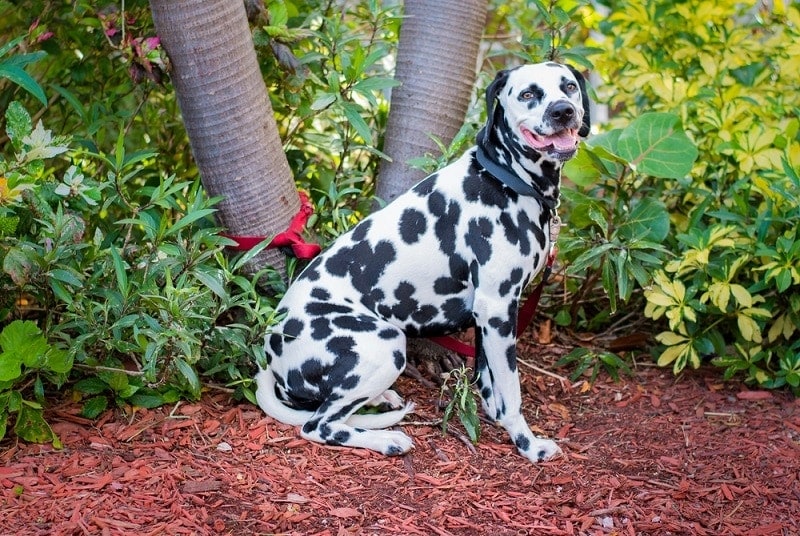
5. Place Posts in the Beds
Cut wood stakes down to lengths of 6 inches each, and bury the stakes in the flower bed approximately 1 foot apart, with the top inch showing. This should not detract from the look of the bed, because foliage and even the mulch itself should cover this small amount of wood. However, it will be uncomfortable for your dog to lie on and may even stop them from walking across.
6. Add Paths
It may be the case that your dog is simply trying to get from one area of the garden to another, and the mulched flower beds offer the only thoroughfare. If this is the case, consider adding simple but effective paths. The dog will appreciate your work, and you’ll appreciate the lack of mulchy pawprints in the house.
7. Add Wire
You can add chicken wire or a wire net just below the surface of the mulch. Bury the wire approximately 1 inch below the surface. Plants can still grow through the holes, but the wire should prevent your dog from walking over the spot.
8. Create a Fence Barrier
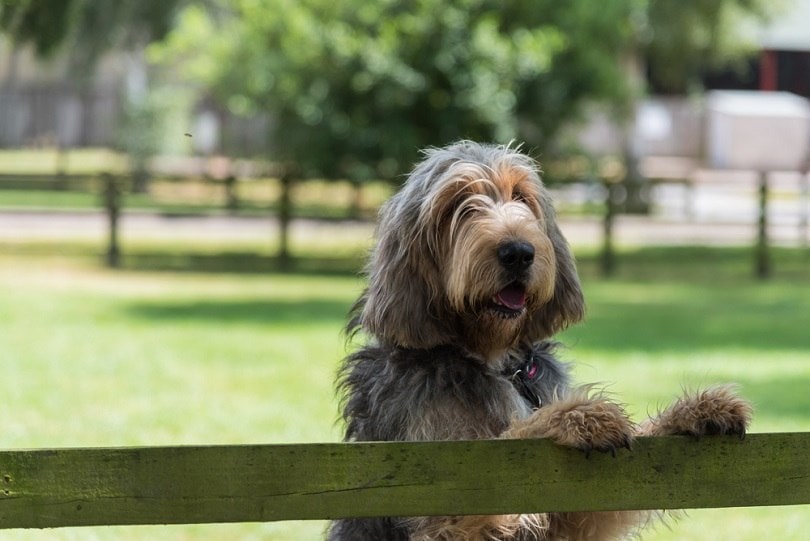
Alternatively, stand the wire vertically and use it as a fence. In fact, any fence could do the trick. Obviously, the type of dog you have and the level of determination they have to get to the mulch will determine the required intricacy of the fence, but even a short wooden fence may be enough to protect your beds.
9. Dog Training
It’s unlikely that you can train your dog to wipe their paws when they come in from the garden, but if your dog is open to it and you have the patience and the time, you could train them to stop walking over the mulch. Use positive reinforcement: Call them off the mulch, and when they do, praise them and reward them. Similarly, reward your dog when they walk around the mulched area or avoid it completely, and ignore them when they walk over it. It can take time to train them out of this habit, but some dogs do learn quickly.
Keep Your Dog Off the Mulch
Mulch can be made of organic and inorganic materials. Typically, the biggest problem for dog owners comes from the organic varieties, especially those that contain rotting food. Using these methods, you can attempt to deter your dog from walking over the mulch and stop them from tracking it through the house.
Featured Image Credit: Tom Myers, Shutterstock

